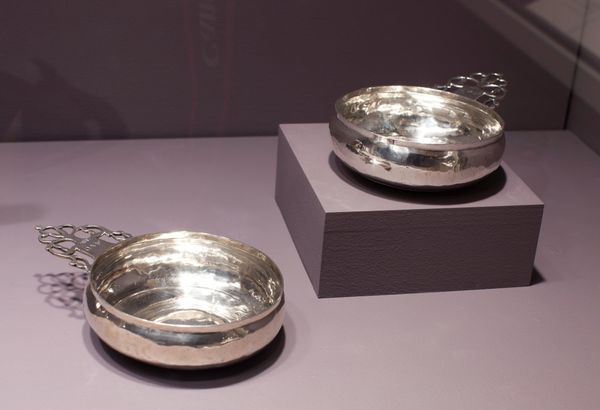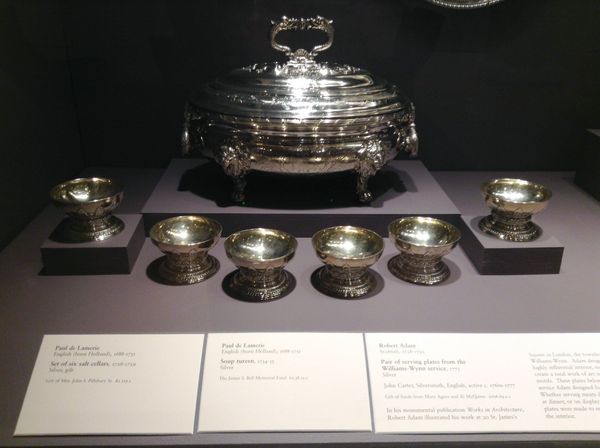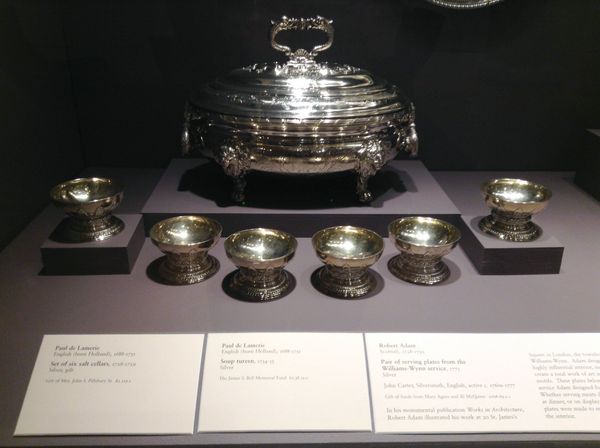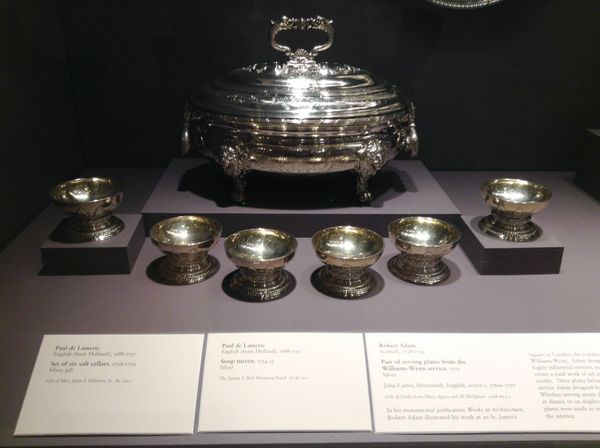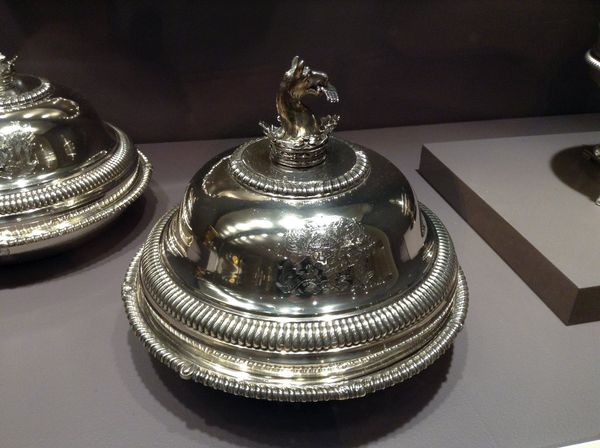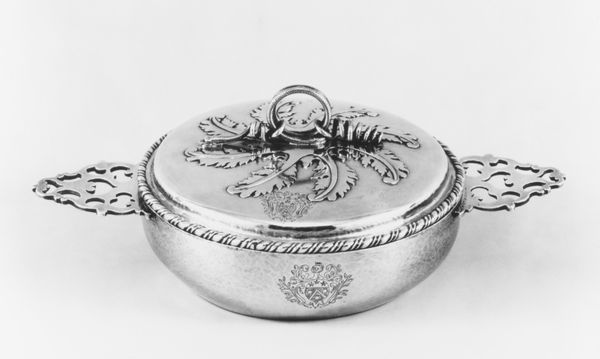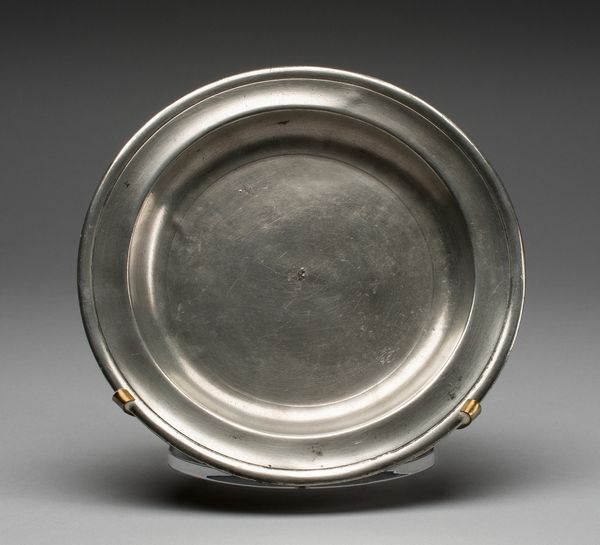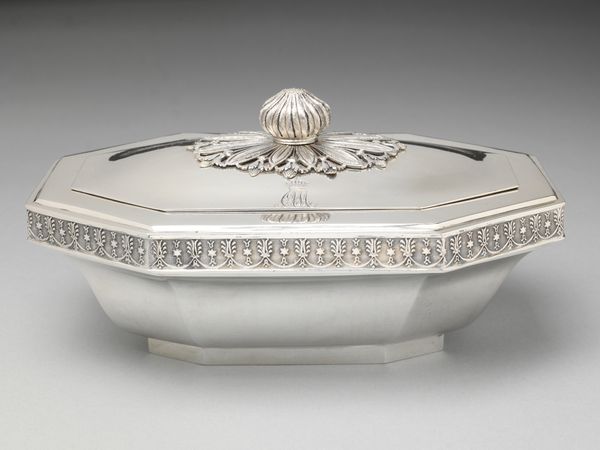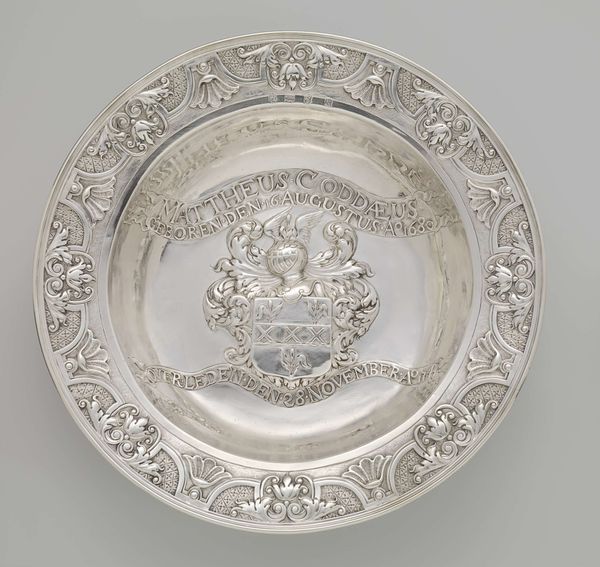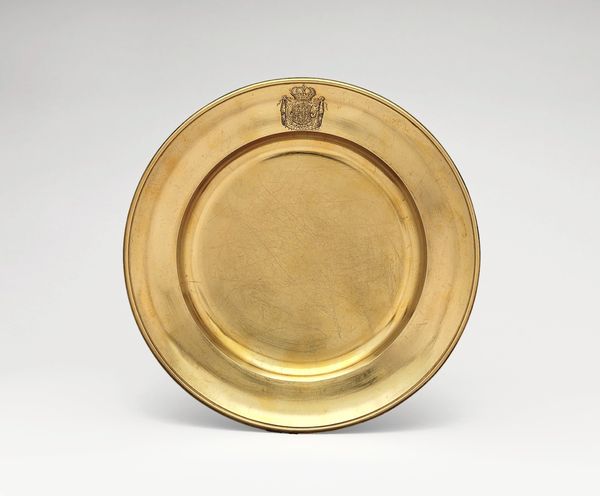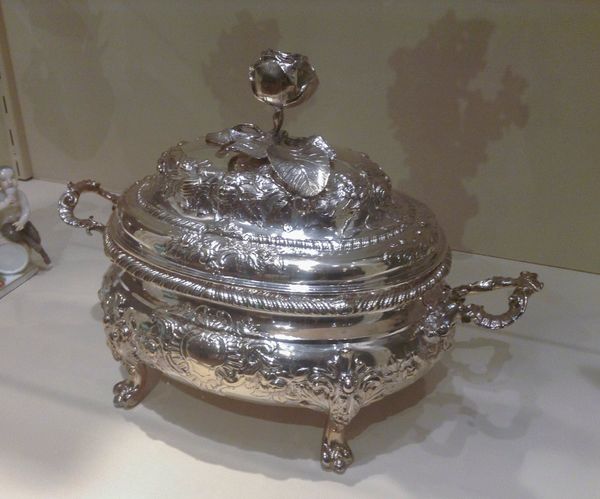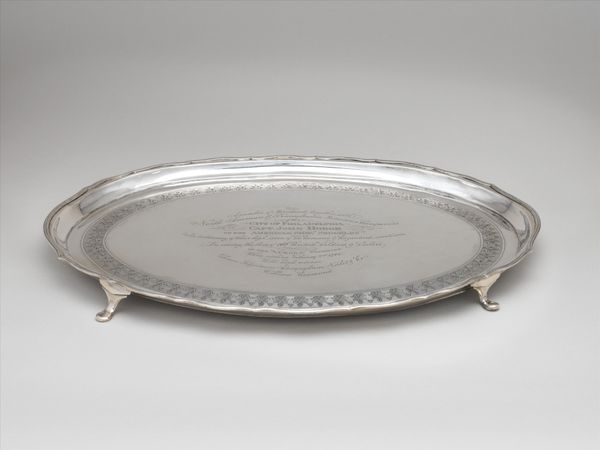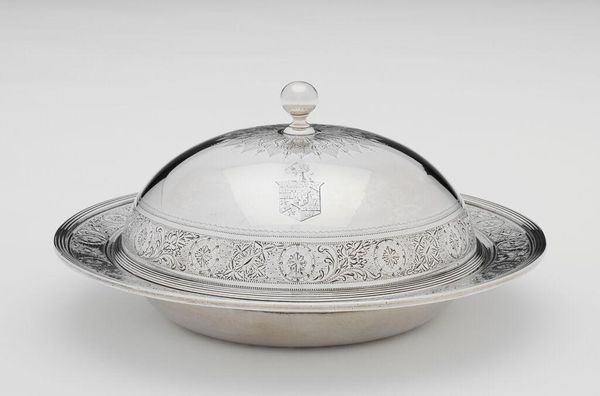
silver, ceramic
#
medieval
#
silver
#
ceramic
#
ceramic
#
united-states
Dimensions: 2 1/2 x 9 5/8 in. (6.4 x 24.45 cm)
Copyright: Public Domain
Editor: Here we have John Coney's footed salver from around 1702, crafted from silver. It's quite small and austere, but with this intriguing heraldic engraving in the center. How do you interpret its presence in early American society? Curator: That's a great question! The salver, beyond its function, is a powerful signifier of class and identity in early colonial America. The presence of heraldry, likely imported from Europe, speaks volumes about the aspiration to establish a social hierarchy mirroring the old world. Editor: So, it’s more than just a serving dish. It’s making a statement. Curator: Exactly! Silver, especially in this period, was a valuable commodity, signifying wealth and status. This wasn't simply about possessing an object; it was about visually demonstrating one's place within a developing social order. Who had access to it, who created it, and who owned it are equally critical questions here. Editor: That’s a great point. The engraving feels deliberately positioned, almost like a signature. Curator: Yes! Think about the silversmith, John Coney. He's not just a craftsman but also complicit in constructing and reinforcing this hierarchy. Whose symbols did he get to create? Whose did he not? Who commissioned his labor, and under what societal conditions was that labor undertaken? What narratives were excluded in this creation? These are all crucial lines of inquiry. Editor: That makes me see the salver in a totally different light now – not just as a pretty object but as a marker of power dynamics. Curator: Precisely. It allows us to think about how objects participate in the social construction of identity and class, and how they often mask complex histories of labour and social inequalities. Hopefully, such dialogues allow us to move toward equity and social justice in the present. Editor: Thanks! This conversation has made me rethink how to look at historical artifacts, I really appreciate your point of view.
Comments
No comments
Be the first to comment and join the conversation on the ultimate creative platform.
